How to Clean Paint Brushes

Last updated September 7, 2023
We’ve all been there: finishing up a painting project but under too much of a time crunch (or a little too tired out) to clean the brushes properly. Unfortunately, improperly cleaning a paint brush after your first project may make the next use much more difficult. If paint dries on the brush fibers, the bristles may stiffen and the brush may not last as long — or may need to be tossed out entirely. So consider cleaning the brushes a crucial step whenever you paint.
Tip: Check any manufacturer’s instructions for your paint brushes and follow the recommendations for solvents, paint thinners or cleaning materials.
Difficulty:
Beginner
Duration:
Under 2 hours
Table of Contents
Remove the Wet Paint from the Brush
Clean the Brush With Solvent
Rinse the Brush With Water
Cleaning Paint-Hardened Brushes
Dry and Store the Brush
Remove the Wet Paint from the Brush
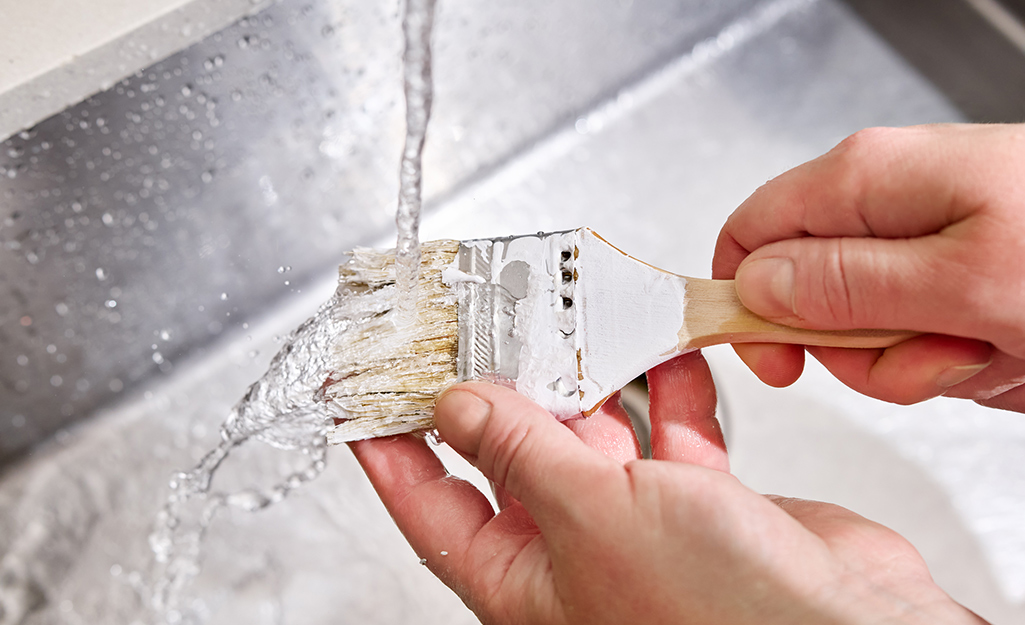
Learning how to properly clean paint brushes can save you money and improve the painting process in the long run. Plus, the steps are less complicated than you might think. Now let’s start paint brush cleaning, so they’ll be in good shape for years to come.
- Before painting, be sure to use high-quality brushes that are right for the type of paint you’re using. Use nylon paint brushes or polyester paint brushes for latex and natural paint brushes for oil paints. This will make cleanup easier, especially when you learn how to clean oil paint brushes.
- Good brushwork is to allow only about two inches (or “two fingers”) of paint on the brush before painting. The less unnecessary paint gets on the brush, the less paint you will have to clean off later.
- When you’re finished painting, remove as much of the paint from the brush as you can – either on the surface you’re painting, the rim of the paint can or on a cloth, paper towel or piece of newspaper.
- An additional option is to gently use a brush comb to comb out the paint from the bristles.
Clean the Brush With Solvent
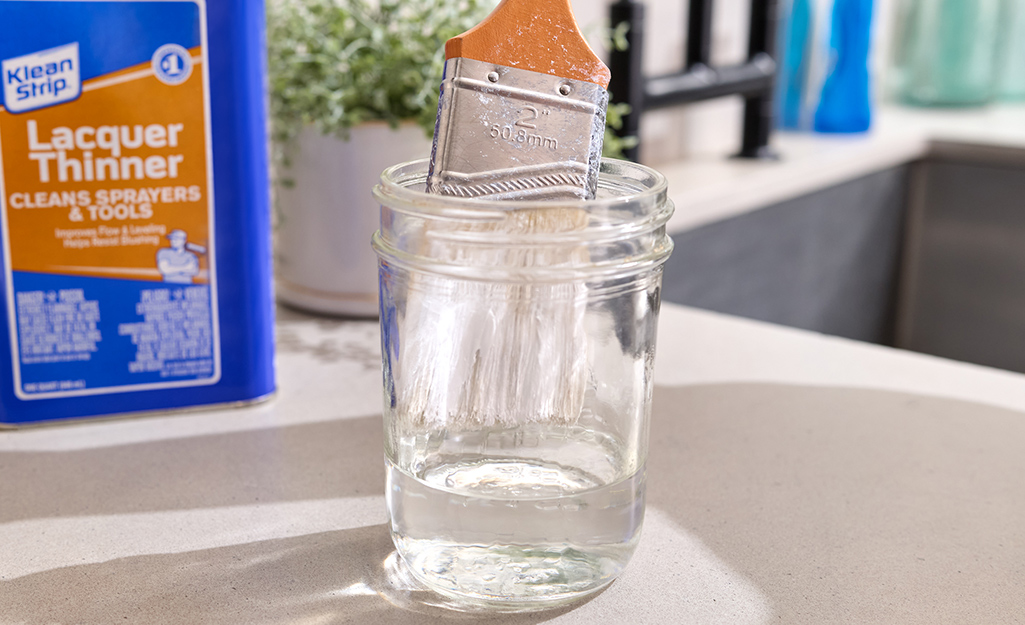
Water-based paint, such as acrylic or latex, is a great option for most interior (and even some exterior) walls. It produces fewer odors and is easier to clean—if you’ve used acrylic or latex paint, learning how to clean acrylic paint brushes is easy. All you’ll need to clean your brushes is some warm water or milddish soap.
Clean the brush with the appropriate solventfor the type of paint you’ve been using. If you used oil-based paint, you’ll be cleaning your brushes with mineral spirits or turpentine. Oil-based paint is meant to last and last, making it fantastic for spots like molding, trims and banisters — the resin in it makes this paint form a non-breathable coating. The only downsides? Stronger smells, a longer drying time and a slightly harder cleaning process.
If you used shellac, which is fantastic at repelling stains and rust, you should use denatured alcohol to clean your brushes. Here’s a general guide for cleaning paint brushes covered with oil or shellac paint:
- First off, be sure to use solvents only in a well-ventilated area. Place enough of the solvent to completely submerge the bristles in a plastic bowl or other small container. Do not dip a dirty brush directly in the solvent’s original container.
- Stir the brush in the solvent for 10 to 30 seconds.
- Wipe the bristles against the side of the bowl when finished.
- Repeat until no more paint comes off the brush.
Rinse the Brush With Water
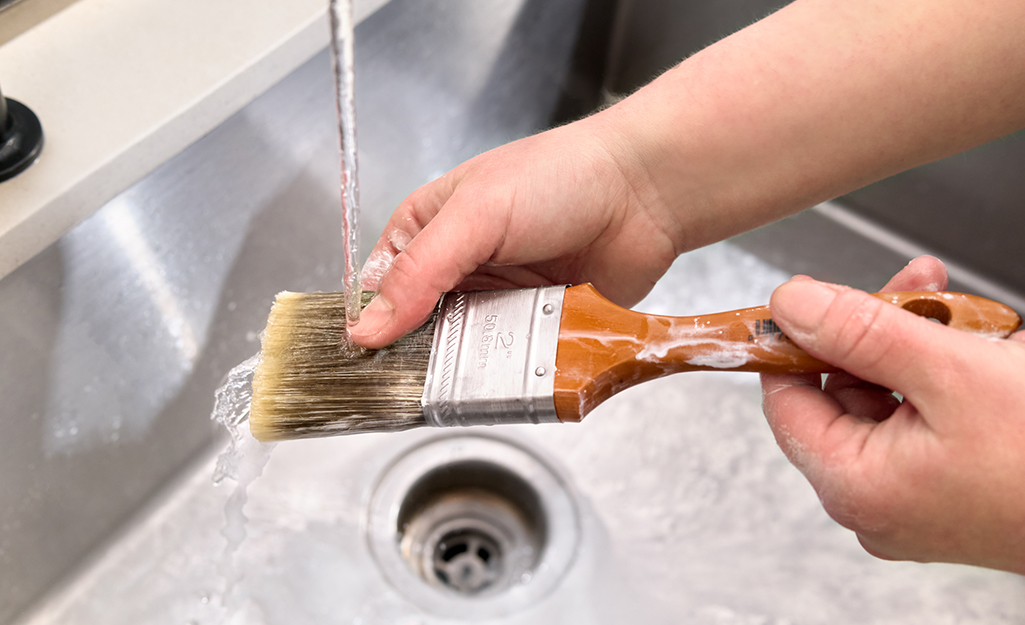
- Having cleaned the brush in the solvent, use lukewarm water to wash out the remaining paint and the solvent itself.
Water is always a good go-to when learning how to clean paint brushes. - Rinse the brush in a bowl or under running lukewarm water. Add a few drops of liquid dish soap to the water or directly onto the bristles if needed.
- If you rinse under a tap, hold the brush with the bristles down, to keep water from entering the ferrule.
- Use your fingers to rub or “massage” the remaining residue from the brush. Be sure the solvent is rinsed out of the brush before handling it with bare fingers.
- Finally, rinse the brush in warm, soap-free water to remove any remaining soap from the brush.
Tip: Do not use hot water, which can cause the ferrule, the part that connects the brush head to the handle, to expand and loosen, which may lead to some of the bristles falling out.
Cleaning Paint-Hardened Brushes
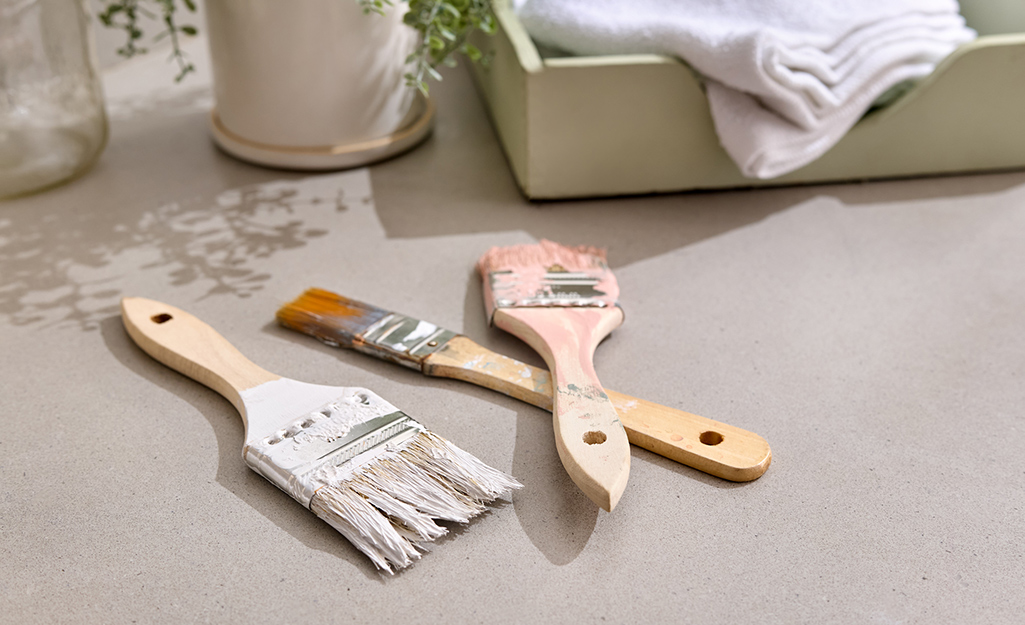
It can be a challenge on how to get dried paint out of brushes, but often the effort is worth it. Effectively washing a “petrified brush” can spare you the cost of buying a new one, so learning how to clean paint brushes is worth it.
- Soak the brush with hardened paint in vinegar for an hour. If the bristles don’t bend, soak for an additional hour.
- If it needs more loosening after two hours, submerge the head of the brush in vinegar in a pot, place the pot on a stove and bring to a boil. Afterwards, remove it from the heat and allow it to cool off. Remove the brush with care and use a pot holder or tongs if needed.
- Once cool, comb out bristles with your fingers or a brush comb.
- Rinse out the loosened paint with water and repeat as necessary.
Tip: If vinegar is ineffective, try a commercial brush cleaner and follow instructions. Some brushes may need to soak for more than 24 hours.
Dry and Store the Brush
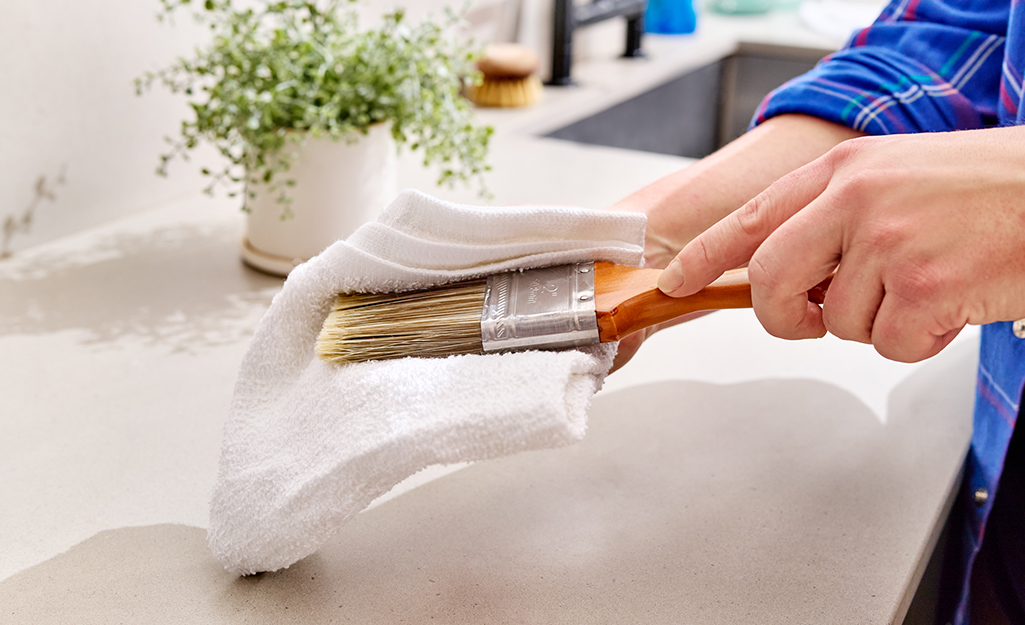
There are a couple of ways to remove water from wet brushes.
- Shake the brush vigorously above a paint pail, cardboard box or other container.
- Alternately, use a brush spinner to spin the brush dry above a container.
- Repeat as necessary.
- If moisture remains, blot it on newspaper, paper towel or clean cloth until the brush has dried.
- To store, lay the brush flat or hang it with the bristles pointing down.
Tip: When you get new brushes, save the packaging and use it for storage, if possible. The cover will help the brush retain its original shape.
Paint brush cleaning isn't as complicated as one might at first assume. While it may seem like time you don’t want to spend at the end of a project, cleaning paint brushes only takes a few minutes. This makes a big difference in protecting high-quality brushes and ensuring that your paint projects will look their best.
Whether you need paint brushes or paint, The Home Depot delivers online orders when and where you need them.



























